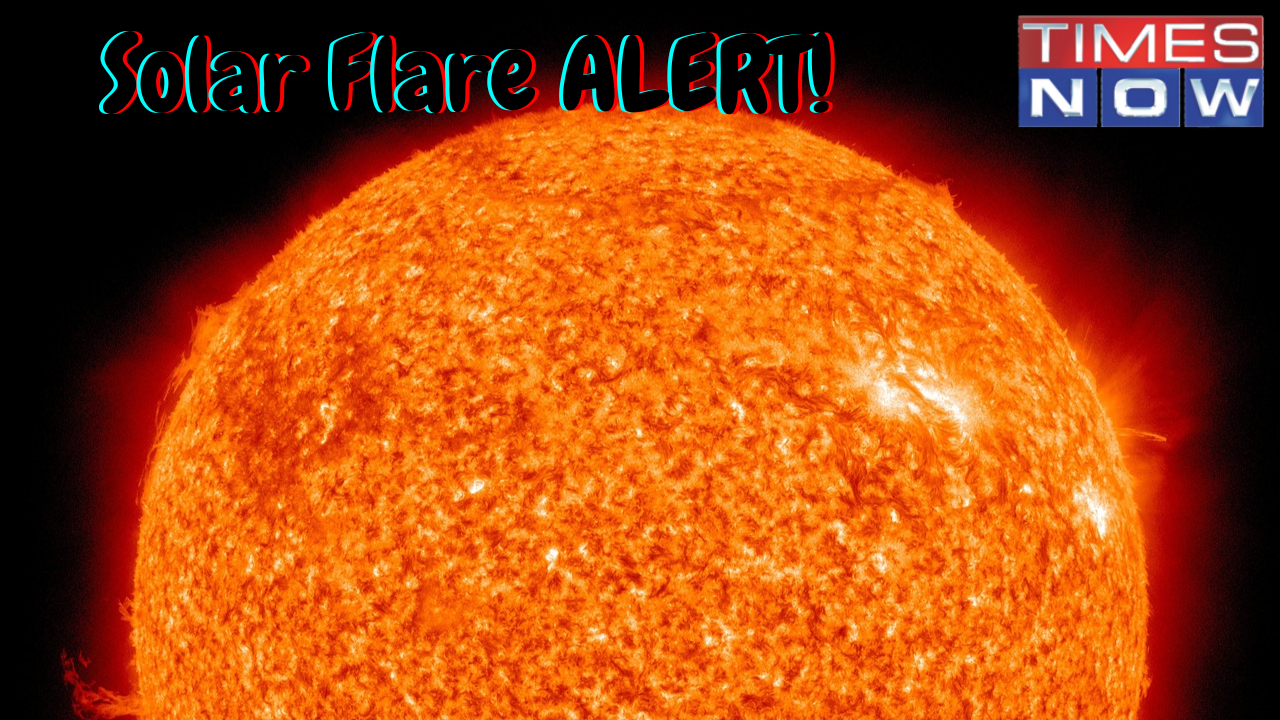Strong M-Class Solar Flare Is Directed Towards Earth; Geomagnetic Storm Threat Ahead?
NOAA and NASA models have forecasted that Sun has spewed strong M-class solar flare towards Earth. Will it i

Earth Braces for Potential Space Weather Impacts
Over this past weekend, a giant group of sunspots called AR3638-47 shot out at least 6 huge clouds of particles and magnetic fields from the Sun. These clouds are called coronal mass ejections (CMEs), which are large expulsions of plasma and magnetic field from the Sun's corona. They often follow solar flares and are normally present during a solar maximum, which is the period with the most sunspot activity in the 11-year solar cycle. The CMEs were all headed just slightly south of Earth's path around the Sun, the Spaceweather.com reported. NASA predicted the CMEs would narrowly miss hitting Earth one after another.
Finally though, late on April 21st, there was a reasonably strong solar flare (M3.4 class) from that same sunspot region AR3638. This flare may have produced a partial-halo CME that is partially directed towards Earth. Scientists are waiting for more data from the Solar and Heliospheric Observatory (SOHO) spacecraft to confirm if the CME will intersect Earth's orbit.
Radio Blackout Risk
According to a forecast from the National Oceanic and Atmospheric Administration (NOAA), there is a risk of minor to moderate (R1-R2) radio blackouts in the next few days, through April 24th. There is also a slight chance of strong (R3) or greater radio blackouts. This is because of the high possibility of more flares from the active sunspot regions currently visible on the Sun's surface.What Could Happen on Earth?
If an Earth-directed CME does occur, it could cause impacts like auroras at high latitudes on Earth. CMEs can also temporarily disrupt operations of satellites, communication systems like radio, and navigation systems like GPS.Space weather forecast agencies like NOAA are closely watching the active Sun and any incoming CMEs. They will provide updates and alerts about potential impacts from the solar activity. NOAA satellites keep a close watch on the sun's activity, detecting solar flares and coronal mass ejections. Given the unpredictable nature of these events, which can reach Earth in mere minutes, NOAA's Space Weather Prediction Center utilizes this data to track solar activity and issue forecasts, predictions, and alerts.
Trending:
End of Article
Subscribe to our daily Newsletter!
Related News





Google Wallet Is Now Officially Available In India: How To Download And Use The App

This Chinese Man Earns Rs 3 Crore By Faking Millions Of Live Stream Views

The Most Expensive iPad In India Now Costs Whopping Rs 2.6 Lakh

Nothing’s CMF Phone 1 Priced Under Rs 12,000 To Launch In India Soon

WhatsApp Introduces Zoom Control Feature For Camera, Here Is How It Works









